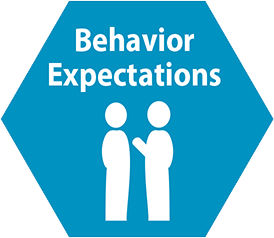
The COVID-19 pandemic has led hospitals across the globe to rethink safety and implement new processes and protocols to protect the health of patients, visitors, staff and anyone else who might enter a healthcare organization. Such measures include creating COVID and non-COVID patient care units, building negative pressure rooms, expanding the use of PPE and encouraging more telehealth visits. These solutions have all helped meet the particular challenges of operating during a global pandemic but maintaining a culture of safety only happens when leaders set and model behavioral expectations for the organization as a whole.

Establishing organizational behavior expectations is one of the six leadership domains outlined in Leading a Culture of Safety: A Blueprint for Success.
Examples of positive behaviors senior leaders can model include transparency, effective teamwork, active communication, civility, and direct and timely feedback. These cultural commitments must be universally understood and apply equally to the entire workforce, regardless of rank, role or department.
Let’s look to the Blueprint for ideas leaders can implement at their respective organizations.
5 Tips for Getting Started
Before jumping into establishing behavior expectations to uphold a culture of safety, seek to understand the current accepted behaviors within the organization. Here are a few considerations for leaders:
- Collect information to understand your starting point. Validated surveys of patient safety culture can help identify areas of strength as well as areas for improvement at organizational, departmental and unit levels. Surveys can also reveal the strength or weaknesses of organizational culture and “subcultures,” and provide leaders a better sense of where they may need to focus attention.
- Use survey results to inform conversations with staff. With the data collected from the patient safety culture surveys, leaders can better connect with the front-line workforce on a regular basis, whether through leadership rounding, safety huddles, briefings/debriefings or other tactics, so they can hear about challenges firsthand.
- Develop a statement or principles to guide your safety efforts. Establish a “credo” or compact to communicate behavioral expectations and share it with your board, leadership, physicians, clinicians and professional workforce. This compact can frame discussions and maintain accountability when someone violates the standard behavioral code.
- Devise a mechanism for escalating concerns or problems. Create a process for reporting when behavioral codes are violated and for dealing with disruptive and unsafe behaviors. Everyone within the organization should understand what that procedure is, and that it will be applied consistently across the organization, regardless of rank, department, revenue or other considerations.
- Be patient and reward progress. Always remember the process of changing behavioral norms across an organization or system can be a long and challenging one. That is why it is so important to ensure there is also a system to reward individuals who are identified as modeling desired behavior. True progress can be accomplished with the dedication of a highly engaged, unwavering and courageous CEO.
Homework
Thus far, we’ve explored five of the six leadership domains outlined in Leading a Culture of Safety: A Blueprint for Success. Brush up on the first four domains with our previous lessons:
- Establish a vision for safety.
- Build trust, respect and inclusion.
- Prioritize safety in the selection and development of leaders.
- Select, develop and engage your board.
For more information about creating a physically and psychologically safe environment for your patients and workforce, check out The Safety Playbook: A Healthcare Leader’s Guide to Building a High-Reliability Organization or Five Disciplines for Zero Patient Harm: How High Reliability Happens. You can also bring education directly to your leadership team with the Choice program, Effective Leadership for High-Reliability Healthcare.






















